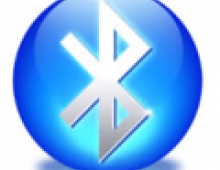
New Wireless Chip Trasmits Data 1,000 Times Faster Than Bluetooth
Scientists from the Nanyang Technological University (NTU) and A*STAR's Institute for Infocomm Research have developed a microchip that can transmit large volumes of data at ultra-high speeds of 2 Gigabits per second - or 1,000 times faster than Bluetooth.
At such speeds, the chip could transfer data the size of 80 MP3 song files (or 250 megabytes) wirelessly between mobile devices, in the flick of a second, or transfer a typical 2-hour, 8-gigabyte DVD movie in just half a minute, compared to 8.5 hours on Bluetooth.
The chipset employs wireless millimetre-wave (mm-wave) technology to transmit large packets of information while consuming little power. This enables low-power applications, like smart phones and tablets, to transmit/receive data between platforms, like projectors and TVs, without the need for cables for the very first time.
"The NTU-I2R team has successfully demonstrated an integrated 60GHz chipset for multi-gigabits per second wireless transmission," said Professor Yeo Kiat Seng, the Principal Investigator of the project and Associate Chair of Research at NTU?s School of Electrical & Electronic Engineering.
Named the VIRTUS chipset, it consists of three components: an antenna, a full radio-frequency transceiver and a baseband processor. The antenna is connected to the transceiver, which filters and amplifies the signals. It then passes the signals to the baseband processor, which comprises non-linear analog signal processing and unique digital parallel processing and decoder architecture - key to lower power consumption.
The team of scientists is the first in the world to successfully put together an integrated low-power 60 Gigahertz (GHz) chipset solution consisting of the three components, making it one step closer to commercialisation. It is also the first team to demonstrate one of the technology's applications - in the form of a high-definition wireless video stream.
Players and global brand names in the electronics and semiconductor industry have approached the developers of the chip in order to commercialize it.
The technology will be showcased at Computex Taiwan held in June.
Technical Specifications
- Complete solution for IEEE 802.11ad standard, including integrated antenna, RF, MAC/PHY
- 2-chip solution (RF: 0.18um SiGe process; MAC/PHY: 65nm process)
- Data rate: ~ 2.5Gbps (about 1,000 times faster than Bluetooth v2.0)
- System power consumption: - Output power level: > 4dBm
- Applications: Type IV for mobile/portable applications
The chipset employs wireless millimetre-wave (mm-wave) technology to transmit large packets of information while consuming little power. This enables low-power applications, like smart phones and tablets, to transmit/receive data between platforms, like projectors and TVs, without the need for cables for the very first time.
"The NTU-I2R team has successfully demonstrated an integrated 60GHz chipset for multi-gigabits per second wireless transmission," said Professor Yeo Kiat Seng, the Principal Investigator of the project and Associate Chair of Research at NTU?s School of Electrical & Electronic Engineering.
Named the VIRTUS chipset, it consists of three components: an antenna, a full radio-frequency transceiver and a baseband processor. The antenna is connected to the transceiver, which filters and amplifies the signals. It then passes the signals to the baseband processor, which comprises non-linear analog signal processing and unique digital parallel processing and decoder architecture - key to lower power consumption.
The team of scientists is the first in the world to successfully put together an integrated low-power 60 Gigahertz (GHz) chipset solution consisting of the three components, making it one step closer to commercialisation. It is also the first team to demonstrate one of the technology's applications - in the form of a high-definition wireless video stream.
Players and global brand names in the electronics and semiconductor industry have approached the developers of the chip in order to commercialize it.
The technology will be showcased at Computex Taiwan held in June.
Technical Specifications
- Complete solution for IEEE 802.11ad standard, including integrated antenna, RF, MAC/PHY
- 2-chip solution (RF: 0.18um SiGe process; MAC/PHY: 65nm process)
- Data rate: ~ 2.5Gbps (about 1,000 times faster than Bluetooth v2.0)
- System power consumption: - Output power level: > 4dBm
- Applications: Type IV for mobile/portable applications




















